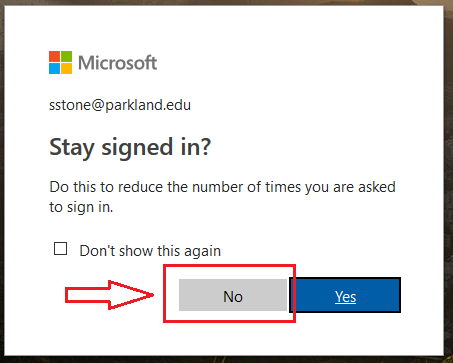Recently, a host of new Office 365 phishing scams have taken resurgence. Phishing emails are widely used and are often one of the most successful ways cyber criminals gain access to business networks.
For more information about how to troubleshoot sign-in issues that use non-browser–based apps, see How to troubleshoot non-browser apps that can't sign in to Office 365, Azure, or Intune. You can't sign in to the portal. If you can't sign in to the portal, use one of the solutions in the following table, as appropriate for your situation. Collaborate for free with online versions of Microsoft Word, PowerPoint, Excel, and OneNote. Save documents, spreadsheets, and presentations online, in OneDrive. As a Microsoft 365 subscriber, your Office apps are activated when you sign in. We recommend that you stay signed in so you can continue to create and edit files, view your recent files list, and save new and updated files to OneDrive. Signing out isn't recommended unless another person wants to use this installation of Office.

Industries like journalism, office administration, legal, marketing, sales and human resources have a higher risk when it comes to phishing emails because their position requires them to open links and engage with strangers.
This campaign of attacks has targeted government agencies, industrial organizations, financial firms, universities, and more. The phishing emails in the images below managed to get through quality, third party email filters. All of the emails reference Office 365, which means Office 365 users are being targeted specifically. Microsoft office 16 13 – popular productivity suite software.
As a user – and the last line of defense, it's important to educate yourself about ways to recognize this scam.Internet browsing privacy software. Some of the signs to watch out for include:
- A warning that your PC is infected. The warning will typically state call Windows support (or tech support, help desk, etc.) now at XXX-XXX-XXXX, but it will rarely say 'Microsoft Support'.
- The warning might be partial or full screen, but it will be difficult to close the window and clicking the close button (the X) will not allow you to exit from the popup. You'll need to end the task via the task manager to close the alert box.
- You might hear pre-recorded audio announcing the alert.
- These warnings have been reported on perfectly legitimate websites. They are usually harmless (as of now) unless you follow the instructions on the alert.
- Warning messages have been observed on all browsers and operating systems. Your pop-up blocker will not block these alerts. It's best to clear your browser history after encountering one of these messages and follow that up with a virus scan.
- The best defense is user education, email filtering & multi-factor authentication (especially if using Office 365 – since you're already paying for it!)
How this Scam Works
According to csoonline.com, there is a pattern this phishing campaign follows that begins by sending emails in an attempt to collect logins for Office 365 accounts. Once credentials are gained, the attackers target the victim's address book which is often filled with business and personal contacts.
During the second stage of attack, they use the first victim's existing relationships as an ice breaker by using informal subject lines like 'FYI' to get the victim to lower their guard and take action. This cycle is repeated again and again.
The harvested credentials are used to access anything the victim has access to – cloud storage through One Drive, SharePoint, Skype – the potential for damage is great. Computer video converter. Nomad fleet 1 0.
Phishing Examples
Below are actual screenshots of phishing emails targeting Office 365 users to give you an idea of what this scam looks like.
Ontech Systems
Above All Else
If access was allowed, remediation/replacement options should be evaluated.
My Microsoft 365 Account Sign In
When in doubt, give Ontech's support team a call at 262-522-8560 or contact us online and we'll gladly assist you. We can help you ensure that proper measures are taken so those emails don't find their way into your inbox again.
A quick 10-minute call is all it takes to see if we're a good fit. If we aren't for whatever reason, we'll point you in the right direction.
[Updated 18th October 2019]You might face a problem using Office 365 that you sign out your account but as soon as you open the program your account is logged in again. It makes your system vulnerable to data hacking or unauthorised access to your personal information.
For example: your laptop might be stolen somewhere, and by luck if the person who finds your laptop is able to login to the system. Now, your connected services like One Drive etc. are also accessible to him. Therefore, it is very important to fix this problem of auto-login. In this article, I am going to guide you on how to stop the Office 365 auto login problem.
To resolve the issue, follow these steps:
- Go to the Office365 homepage.
- Click your profile picture located on the top-right corner of the screen and select Signout.
- After logging out, you will be brought back to the Office365 login page.
Every time you log in to make sure not to check the Keepmesignedin an option that way you can stop the auto-sign-in of your account.
Office 365 Account Sign Up
Medico 2 44 – professional karaoke software downloads. PS.
Link Office 365 Account To Microsoft Account
To access the Office 365 login page, please click here
Air camera video. Android print screen shortcut. Make sure to log out first before accessing the link.
